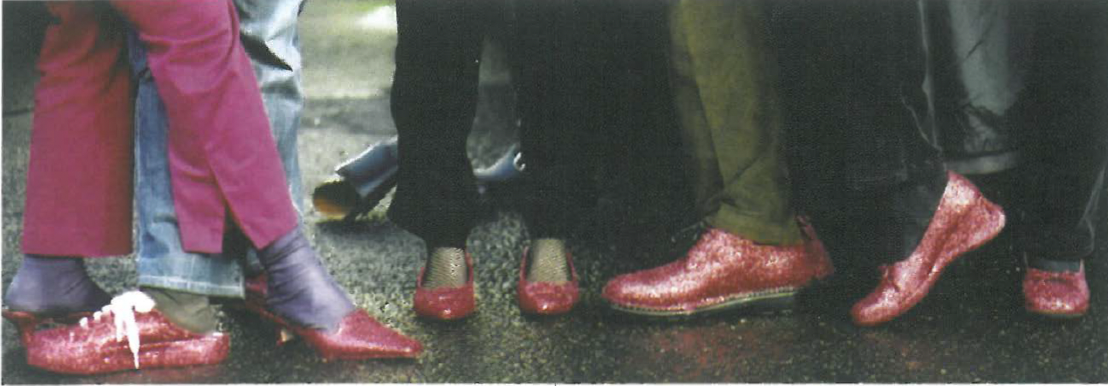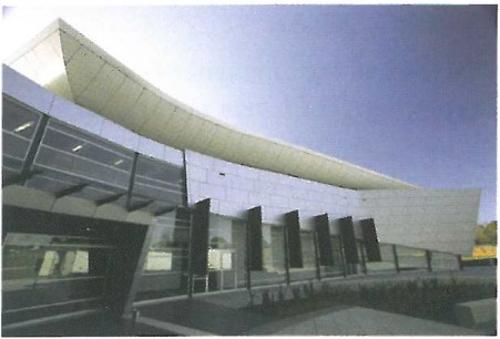
Music, theatrical and even comedy/cabaret events have frequently gotten the lion's share of programming and public attention at the Melbourne International Festival. Whilst there has certainly been more considered attention paid to ensuring that an effective international visual arts component is mediated through the final program, most festival directors have come from a theatre or music background. Do theatrical events slide easily into the dominant media/entertainment/celebrity/sports/politics linkages that form a consistent no-brainer wallpaper in Melbourne cultural life?
Experimentation becomes another attention-grabbing stunt (like the publicists' goody bag attached to the invitation received by the ticket-free A-list travellers) which, despite the festival program's employment of the adjective 'challenging', becomes increasingly empty. And the general public still continues to queue for the Lion King at another theatre. Festivals also include a strongly conservative and formal component – usually in the context of classical music performances by recognised virtuosi or groups both local and overseas in recognition that as flat earth societies go the classical music establishment still packs a mighty punch in terms of sponsorship and profile possibly due to the influential centrality of the ABC.
So saying, in recent years some institutions such as ACCA have consistently presented visual arts event that have the same or greater intellectual weight as the top-heavy music and performance components of the Melbourne International Arts Festival. However the impetus behind these presentations comes from the hosting institution as much as the Festival and does not quite answer the charge that Festival structure and personnel never quite seem to be able to 'place' the visual arts and so rely upon outsiders' expertise. Occasionally there are stand-alone visual projects associated with the Festival which have broken through the claims of music and theatre to capture public attention single-handedly and spontaneously. This year Red Shoe Delivery Service put the visual arts at the centre of the festival experience.
Red Shoe Delivery Service is the name of a rolling project/archive, that grows and mutates and yet orbits around a central theme and practice that was first seen in public in 2003 in New York. A collaboration of three artists, MK Guth, Molly Dilworth and Cris Moss, use a variety of techniques practical, conceptual and virtual to make good the emotional promise suggested by the myth of Dorothy's ruby slippers that could instantly deliver a person to home, and therefore metaphorically to resolution, completeness, ease. The possibility is at once conceptual in so far as it is based upon an unspoken Post-Duchampian directive of unconditional surrender of rationality to follow the artists' directives and ritual in their own constructed paradigms and almost clunkily real in so far as the artists offer to drive members of the public to a specific destination within a reasonable distance from the project, offering the participant the choice of a range of actual sparkling red shoes, just as in the Wizard of Oz film. Material is gathered by filming and photography during the journey. In the conjunction of the almost obviously illustrative and the non-concrete act of mind bending to experience the world assembled and ordered by the artist, a space emerges that proffers questions and answers around contemporary art. Most remarkably these questions are posed in an open and non-threatening manner to members of the general public as well as art initiates. I have previously suggested that the regrettable thing about 'community arts projects' is the hypocrisy and condescension of their overdetermined political and social agendas. Conversely Red Shoe Delivery Service amused a general audience but did not neglect the professional content of theoretical and practice-based underpinnings. It provided legitimate moments of expansion and dialogue for local artists and a lexicon of moments of visual and experiential intrigue.
A further development of the project is the series of hundreds of photoshopped images of Mebournians montaged into different escapist backgrounds from the moon to Running the Bulls at Pamplona using blue screen animation techniques. This took place in a gallery environment at the Arts Centre that held many visual delights and offered a dense and intriguing visual experience. Think of undulating waves of every size, style and format imaginable of hundreds of samples footwear in red glitter, across the gallery, laid out for the public to browse and try on. Think too that these shoes had been diligently and painstakingly sourced from American shoemakers from surplus and outdated stock including the iconic Nike, hand-glued with red glitter piece by piece and sent by sea across the Pacific.
The walls of the gallery were decorated with photographs of previous wearers of the Red Shoes in which the subject of the photograph is both withdrawn, fomalised and yet projecting their innermost fantasies to strangers, think August Sander or the Fruits anthology. Videos of various Melbournians filmed by Red Shoe Delivery Service were projected large scale on the wall. The collaborators discussed their wished-for destination and were seen at their journey's end wearing their ruby red shoes. The soundtrack was the direct comments provided by the participants talking with the artists and was later subtitled with Zen-like inscriptions also drawn from conversations with the participants. Its less obvious focus added a layer of intrigue, non-linearity and uncertainty to the direct straight-to-the-lens, arsing-about of Sam Newman's roving handheld camera. In a huddle of sofas a televison set played longer and formal video pieces commissioned from established writers and filmmakers which provided a more extended visual narrative around journeys and transformation. The framing and telling of narrative was an ongoing thread through the project. The artist MK Guth suggested to the author that since Nine Eleven there had been renewed interest amongst artists in popular mythologies of the United States, both sardonic/deconstructing and also celebratory/consoling and Red Shoe Delivery Service partly belongs to this reexamination of popular imagery. It also comments upon the new forms of easy but complex and coded narrative and content that have become current in the wake of reality television.
Another core rationale of the project was to build upon accepted contemporary paradigms of chance, interactive and cooperative artforms, and the idea of the art event as catalyst setting off other events, equally absurd and anti-logical. These were the artworks created by a range of Melbourne artists for display in the roving van operated by the delivery service. Before the project starts in a particular venue, a call is made to local artists and this general call was augmented in Melbourne by connections of galleries associated with the festival and artists already associated with the festival. Amongst the artists who contributed to the local content were those responsible for the Slide Show Fancy - assorted 'happenings' : Mary Sullivan, Jesse Griffin, Louise Merrett, Georgina Read, Kim Dellavedova, Rachel Maher, Justin Caleo, John Harding and the Lotus Effect – video and altar by Liss Gabb, Rick Randall and Enio Pozzebon in collaboration with the residents of the Richmond public housing estate. Mary Sullivan's window photograph piece What're They Building in There was made for the Melbourne City Edges Lightboxes. The project found itself engaging with communities as diverse as indigenous groups and the Montsalvat artists' community, something of a self-proclaimed centre of artistic excellence but still part of a local landscape of creativity.
But what is local and what is foreign and where is home? Salman Rushdie's profound essay on the MGM Wizard of Oz film of 1939, which is another foundational entry point for the project, reminds us that the concept of 'home' and the magical red shoes that can transport one back to 'home', when one wishes to fly, is by no means an uncontested or easy dream in the last few decades.












